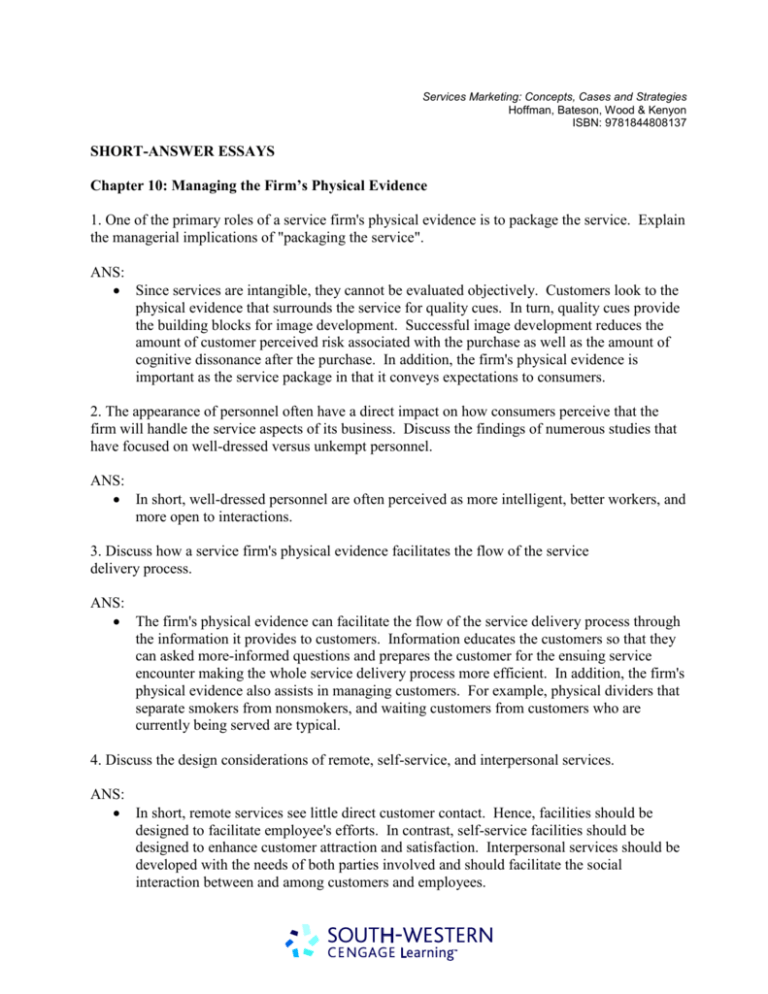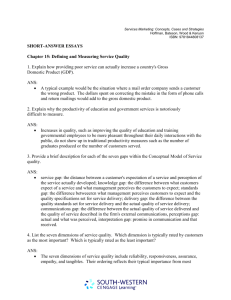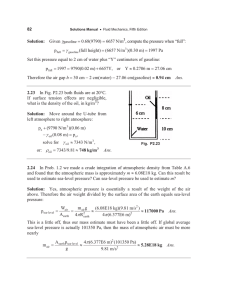SHORT-ANSWER ESSAYS
advertisement

Services Marketing: Concepts, Cases and Strategies Hoffman, Bateson, Wood & Kenyon ISBN: 9781844808137 SHORT-ANSWER ESSAYS Chapter 10: Managing the Firm’s Physical Evidence 1. One of the primary roles of a service firm's physical evidence is to package the service. Explain the managerial implications of "packaging the service". ANS: Since services are intangible, they cannot be evaluated objectively. Customers look to the physical evidence that surrounds the service for quality cues. In turn, quality cues provide the building blocks for image development. Successful image development reduces the amount of customer perceived risk associated with the purchase as well as the amount of cognitive dissonance after the purchase. In addition, the firm's physical evidence is important as the service package in that it conveys expectations to consumers. 2. The appearance of personnel often have a direct impact on how consumers perceive that the firm will handle the service aspects of its business. Discuss the findings of numerous studies that have focused on well-dressed versus unkempt personnel. ANS: In short, well-dressed personnel are often perceived as more intelligent, better workers, and more open to interactions. 3. Discuss how a service firm's physical evidence facilitates the flow of the service delivery process. ANS: The firm's physical evidence can facilitate the flow of the service delivery process through the information it provides to customers. Information educates the customers so that they can asked more-informed questions and prepares the customer for the ensuing service encounter making the whole service delivery process more efficient. In addition, the firm's physical evidence also assists in managing customers. For example, physical dividers that separate smokers from nonsmokers, and waiting customers from customers who are currently being served are typical. 4. Discuss the design considerations of remote, self-service, and interpersonal services. ANS: In short, remote services see little direct customer contact. Hence, facilities should be designed to facilitate employee's efforts. In contrast, self-service facilities should be designed to enhance customer attraction and satisfaction. Interpersonal services should be developed with the needs of both parties involved and should facilitate the social interaction between and among customers and employees. Services Marketing: Concepts, Cases and Strategies Hoffman, Bateson, Wood & Kenyon ISBN: 9781844808137 5. Discuss the physical environmental dimensions of "The Servicescapes Model". ANS: The three major components of the firm's environment include ambient conditions, space/function, and signs, symbols and artifacts. Ambient conditions include temperature, air quality, noise, odor, and music. Space/function includes layout, equipment, and furnishings. Signs, symbols and artifacts include signage, personal artifacts, and style of decor. 6. Discuss the stages of an atmospheric development plan ANS: Step 1: Who is the firm's target market? Step 2: What does the target market seek from the service experience? Step 3: What atmospheric elements can reinforce the beliefs and emotional reactions that buyers seek. Step 4: How do these same atmospheric elements affect employee satisfaction and the firm's operations? Step 5: Does the suggested atmosphere development plan compete effectively with competitors' atmospheres?











